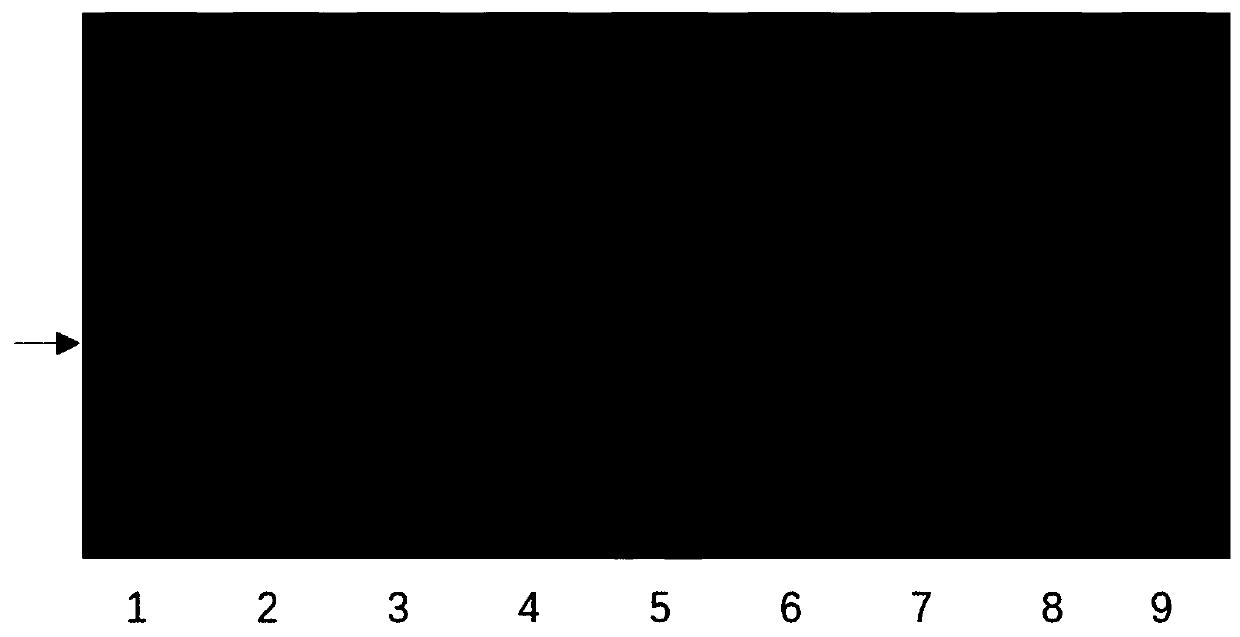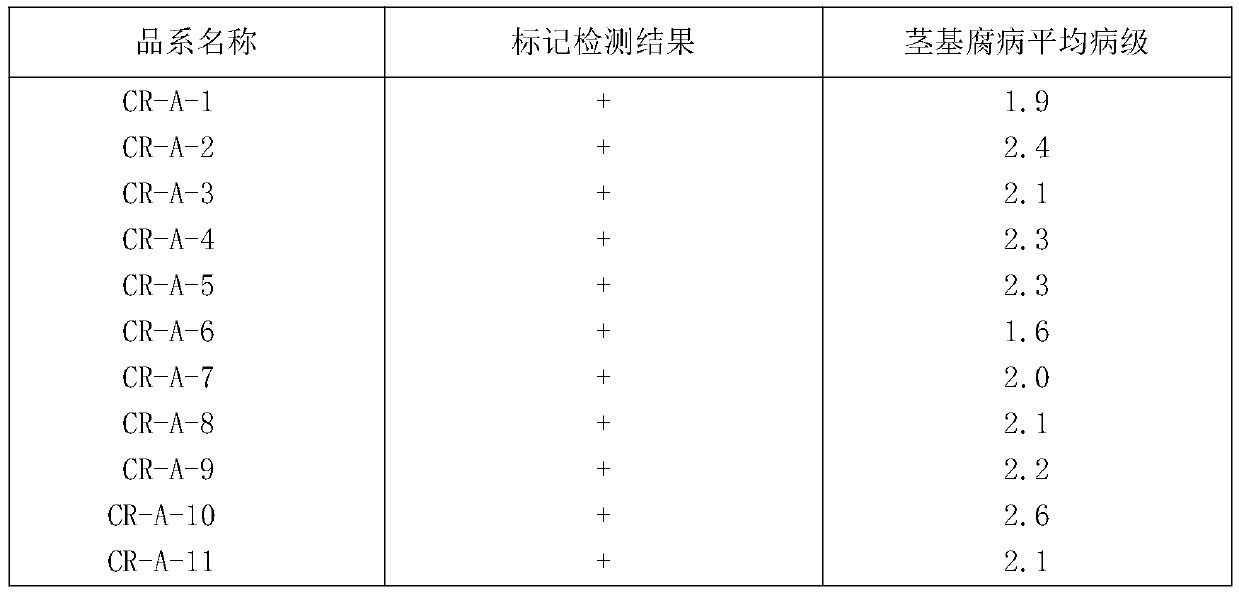Molecular marker closely linked to the wheat stalk rot resistance QTL and application thereof
A technology of stem rot and molecular markers, applied in the fields of wheat breeding and molecular biology, can solve the time-consuming and labor-intensive problems of transferring disease-resistant QTLs, improve breeding efficiency, stabilize PCR amplification, and reduce waste of manpower and material resources Effect
- Summary
- Abstract
- Description
- Claims
- Application Information
AI Technical Summary
Problems solved by technology
Method used
Image
Examples
Embodiment 1
[0026] F 2 plant, F 2 The offspring of the plant adopt the method of single grain propagation, and finally obtain F 6 Recombinant inbred line populations; use SSR and SNP and other markers to analyze the genotype of the obtained recombinant inbred line populations, and construct genetic linkage maps using mapping software such as JoinMap; Disease resistance identification; comprehensive genetic linkage map and stem rot resistance identification were analyzed by MapQTL analysis software to locate disease resistance QTL and obtain molecular markers closely related to disease resistance QTL. Xgwm37-140 shown in the present invention is a molecular marker closely linked with the 7D chromosome resistance QTL of Yangmai 158. This tag can be obtained by:
[0027] DNA from leaves of CI12633 and Yangmai 158 was extracted by CTAB method (Proc Natl Acad Sci USA, 1984, 81(24):8014-8018).
[0028] PCR amplification was performed using the following reaction system and operating procedu...
Embodiment 2
[0035] 1. Predict the strain resistance of CR-A-1~CR-A-40 and CR-B-1~CR-B-24
[0036] In the examples, the strains defined as CR-A-1~CR-A-40 and CR-B-1~CR-B-24 are based on CI12633 as the male parent and Yangmai 158 as the female parent, crossed and multiplied to f 8 Generation of high-generation strains.
[0037] (1) Extract DNA from leaves of CR-A-1-CR-A-40 and CR-B-1-CR-B-24 lines by CTAB method.
[0038] (2) Using the wheat DNA obtained in step (1) as a template and using SEQ NO:1 and SEQ NO:2 as primers to perform PCR amplification.
[0039] PCR reaction system: total volume 20μl, including 10×buffer 2μl, 1.5mM MgCl 2 , 0.2mM dNTPs, 0.25μM each of SEQ NO:1 and SEQ NO:2, 50ng of template DNA.
[0040] PCR operation program: pre-denaturation at 94°C for 5 minutes; then denaturation at 94°C for 30 sec, annealing at 55°C for 30 sec, and extension at 72°C for 30 sec, a total of 40 cycles; finally, extension at 72°C for 5 min.
[0041] (3) After the amplified product is se...
PUM
| Property | Measurement | Unit |
|---|---|---|
| Length | aaaaa | aaaaa |
| Length | aaaaa | aaaaa |
| Length | aaaaa | aaaaa |
Abstract
Description
Claims
Application Information
 Login to View More
Login to View More - R&D
- Intellectual Property
- Life Sciences
- Materials
- Tech Scout
- Unparalleled Data Quality
- Higher Quality Content
- 60% Fewer Hallucinations
Browse by: Latest US Patents, China's latest patents, Technical Efficacy Thesaurus, Application Domain, Technology Topic, Popular Technical Reports.
© 2025 PatSnap. All rights reserved.Legal|Privacy policy|Modern Slavery Act Transparency Statement|Sitemap|About US| Contact US: help@patsnap.com



